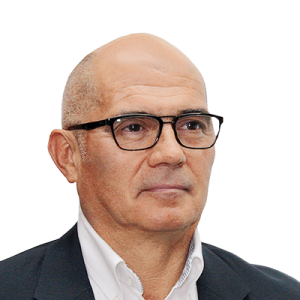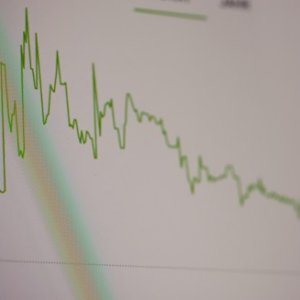
Market Gaps Opening Doors For New, Old Players Alike
The production process of a mine is only one element to realizing its riches. The other, mineral processing, is vital for establishing the amount of metal that can be gleaned from the ore. However, Jeffrey Davis, President and CEO of cyanide company Cyanco, says it is an often-overlooked industry. “The sodium cyanide industry has a very critical role in the global gold and silver mining value chains but for a variety of reasons, the industry is structurally under-invested,” he says. “The global market for sodium cyanide is growing rapidly and there are only five major players that we consider to be top-tier producers. There are large gaps between demand and supply and market capacity.”
The lack of supply could be of concern as analysts speculate a higher need for the chemical in the industry. According to a report released by Persistence Market Research, a third-platform research firm, on the sodium cyanide market, “there has been an increase in the demand for flotation reagents, such as sodium cyanide, due to the decreasing quality of gold and silver ores.” It states that the fluctuations in gold prices have become an additional driver along with a bigger focus on underground mines.
The report states that Latin America has shown a particular rise in local and foreign investment, which could make the region a hot spot. India and China continue to be major gold-producing countries and are important drivers of demand while Australia and South Korea are key sodium cyanide exporters. IHS Markit, a research platform, emphasizes that “close to 90 percent of sodium cyanide is used for gold and silver processing in North American markets and around 78 percent is used for this purpose worldwide.”
In effect, companies are rising to the challenge and preparing themselves for those to come. “Sodium cyanide is a global industry but companies achieve competitive advantages regionally,” says Leonardo Martinez, Business Development Manager of Cyanco. “For this reason, Mexico is a strategic market for us as we have a factory in Houston and a distribution terminal in Hermosillo, Sonora. Mexico is Cyanco’s key focus market outside the US.”
ALL THAT GLITTERS
Despite the bright horizon that lies ahead for sodium cyanide suppliers, constraints in the market could their future put at risk their future. According to the sodium cyanide market report released by Persistence Market Research, various regulations in the industry could inhibit the use of sodium cyanide. “Regulations, such as the International Cyanide Management Code have defined a particular limit on the use of sodium cyanide,” it says. “An excess amount of sodium cyanide is harmful for human consumption and as a result, there has been an increased focus on using safer alternatives.” IHS Markit emphasizes that many regions around the world are trying to ban the use of sodium cyanide for the recovery of gold and points to legislation that has been approved in US states Montana and Wisconsin to ban new operations from using sodium cyanide. In Mexico there have been no signs of trying to ban the chemical’s use but strict NOM-155-SEMARNAT-2007 is in place to dictate how it should be used, transported and stored.
The use of sodium cyanide is also one of the main objections against the mining industry as the chemical is highly volatile and hazardous. According to the Cyanide Code, “the reactivity of cyanide provides numerous pathways for degradation and attenuation” once released in the environment and can impact wildlife, aquatic organisms, birds and mammals. One example of the detrimental effects it can have on ecosystems was seen in 2014, when a tailings dam burst at the Buenavista del Cobre mine, polluting the Sonora river with toxic cyanide. The incident contaminated the water used by approximately 24,000 inhabitants in the area, according to Forbes. Greenpeace Mexico declared it the “worst ecological disaster in Mexican history.”
But the event is also an example of the importance of preventive methods in mine operations. Organizations such as the International Cyanide Management Code continuously develop international standards for the use of the chemical that can greatly minimize risks when applied appropriately. Sodium cyanide producers like Chemours and Cyanco adhere to these standards and teach operators how to comply to these benchmarks. “We always want to be one step ahead of possible risks,” says Claudia Márquez, Latin America Regional Director of Mining Solutions at The Chemours Company. “Our full-time product stewards and technical support specialists spend the majority of their time at our customers’ mines, educating the industry on best practices. We are leaders when it comes to establishing safety standards.”
OPPORTUNITIES FOR NEW PLAYERS
Although in their infancy, new and more ecological technologies such as bioleaching are emerging as potential challengers. The American Geosciences Institute explains that biomining is the process of using micro-organisms to extract metals from either ore deposits or mine waste or to clean up areas contaminated with metals. But many remain doubtful of its acceptance in the market as its cost remains relatively high.
Despite the doubts, Chile has become an early adopter of this technology. According to the BBC, companies in the country decided to adopt bioleaching techniques for mine deposits with a low percentage of copper and approximately 20 percent of the world’s copper production is processed with this technology.
New solutions like biomining are being met with hesitation but companies like Alexander Mining are firm believers that the greatest potential for innovation in the mining industry lies in mineral processing. “The role of mineral processing is key because it has a material impact on feasibility and economics,” states Martin Rosser, CEO of Alexander Mining. “By improving recovery by a few percent or more and hence reducing costs, operators can greatly affect returns. So far, many technology advancements have been incremental rather than revolutionary, so any technology that has the potential to transform the recovery of metals at the mine site has major importance.”
Another alternative was developed in mid-2018 by a team of researchers at the University of Notre Dame. The technology uses molecular recognition to capture and contain precious metals ions. “Currently, most of the world’s gold mining relies on a 125-year-old method that treats gold-containing ore with large quantities of poisonous sodium cyanide, which is extremely dangerous for mine workers and can cause environmental issues,” said Bradley Smith, senior author of the study, and the Director of the Notre Dame Integrated Imaging Facility. “The new container molecules that our research team created are expected to be very useful for mining gold since they can be used in an alternative process under milder conditions.”
Although sodium cyanide is 125 years old, Martinez says that it is still considered state-of-the-art technology. “There is nothing that works better,” he says. “In our view, no product will replace sodium cyanide in the medium term. Alternatives like bio leaching have yet to surpass the results of sodium cyanide because in bioleaching every single mineral must be processed uniquely and requires different solutions, whereas sodium cyanide works on a diverse range of ore bodies.”














